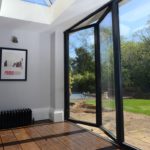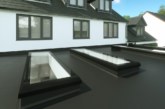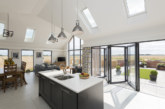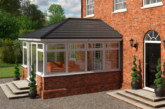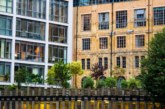Chris Coxon, Head of Marketing at PVC-U solutions provider Eurocell, examines why natural light is an increasingly sought after commodity for homeowners.
Housebuilders are starting to recognise that, for today’s home occupier, natural light is an increasingly key design aspect in making a house a home. For many, the trend stems from the public being far better educated about the importance of wellbeing and the positive role that high levels of exposure to natural light plays in creating wellbeing.
The importance of maximising light in the home is perhaps best highlighted by the fact that, according to the World Health Organisation most Europeans now spend 90% of their lives indoors. This not only marks a seismic shift in habitat for a species that only two hundred years ago was literally living on the land, but also severely limits our exposure to natural light.
This has a very profound impact on our wellbeing. After all, it is well established that exposure to natural light can reduce symptoms associated with Seasonal Affective Disorder, stress, anxiety and depression due to the body’s natural release of serotonin. Consequently, the design of the buildings in which we live and work, have to compensate for the vast sums of time we now spend indoors – by ensuring that they are designed to maximise natural light.
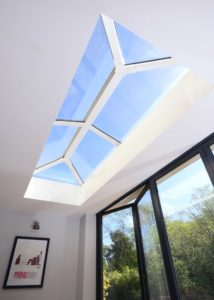
Increased awareness
This awareness is influencing all types of design, as leading architects, builders and developers seek innovative approaches to boost light in the home.
In a recent survey we conducted 80% of consumers said they want to increase the amount of light entering their home. When asked more about the issue, 48% said they would pay more to have a home with a greater amount of natural light and 57% said they would be more likely to buy or rent a home if it had more natural light.
Architects at leading studios Hawkins Brown, Simpson Haugh and BDP, as well as property developer The High Street Group, discussed the findings, highlighting that ‘regulation vs. design vs. cost’ is the main equation when it comes to natural light. This illustrates that, while everyone would like to have more light in their homes, external factors, such as cost and localised building constraints, cannot always be easily overcome to achieve the goal of maximising it in the home.
The WELL standard
Housebuilders need to continue to consider innovative ways to optimise the amount of natural light in the home, within the constraints that they often face. One such way is to adopt the WELL architectural standard (www.wellcertified.com) into building design. It is a framework that aims to ensure that the buildings in which we live advance human health and wellbeing. The standards are based on seven core concepts of health and hundreds of design features that should be considered.
Maximising the amount of natural light in the home is key to this, as most people feel happier and more uplifted in bigger, naturally brighter spaces. Relatively simple designs, such as utilising glass in the roof and having bigger windows, can achieve this goal while also providing the effect of feeling more connected to the outdoors.
Eurocell’s survey findings can be found in its ‘Future Home Report’ which can be downloaded in full from www.eurocell.co.uk/whitepaper

